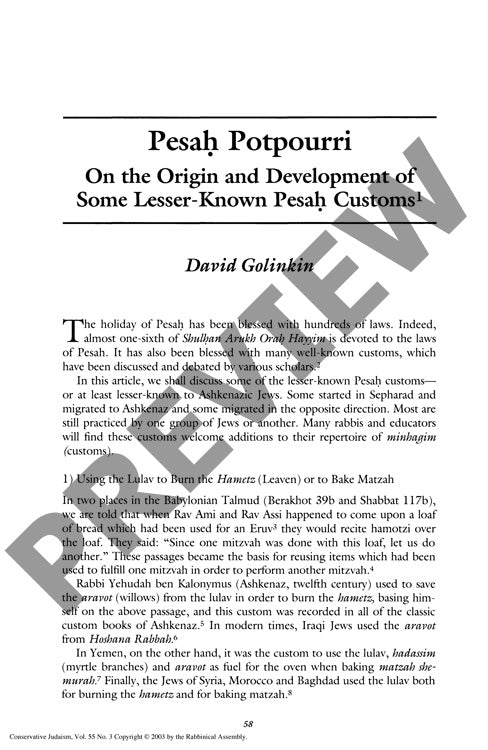Pesah Potpourri on the Origin and Develo
Couldn't load pickup availability
Jewish communities worldwide developed a rich tapestry of lesser-known Passover customs that reveal remarkable patterns of cultural exchange and preservation across centuries. Thirteen distinctive practices - from burning hametz with palm fronds to wearing white garments at the Seder - demonstrate how ritual innovations spread between Sephardic and Ashkenazic communities while maintaining their essential character. Through analysis of primary sources spanning the Babylonian Talmud to modern ethnographic accounts, these customs illuminate the dynamic evolution of Jewish religious practice. The research traces how ceremonies like the seder plate arrangement and theatrical Exodus reenactments emerged in medieval Spain and Germany before flowing into North African and Middle Eastern communities. Many customs reflect the principle of hibuv mitzvah (affection for mitzvot) and creative efforts to maintain children's engagement during the lengthy Seder ritual. The investigation also uncovers instances of textual forgery in modern haggadot and documents the development of alternative versions of ceremonies like "Pour Out Thy Wrath." By examining historical sources including Talmudic literature, medieval responsa, travel accounts, and ethnographic documentation, this research maps how Jewish communities preserved, adapted and transmitted ritual practices across geographic and cultural boundaries.

More Information
-
Physical Description
-
Publication Information
Published 2003
ISBN
-
Publication Credits
David Golinkin

